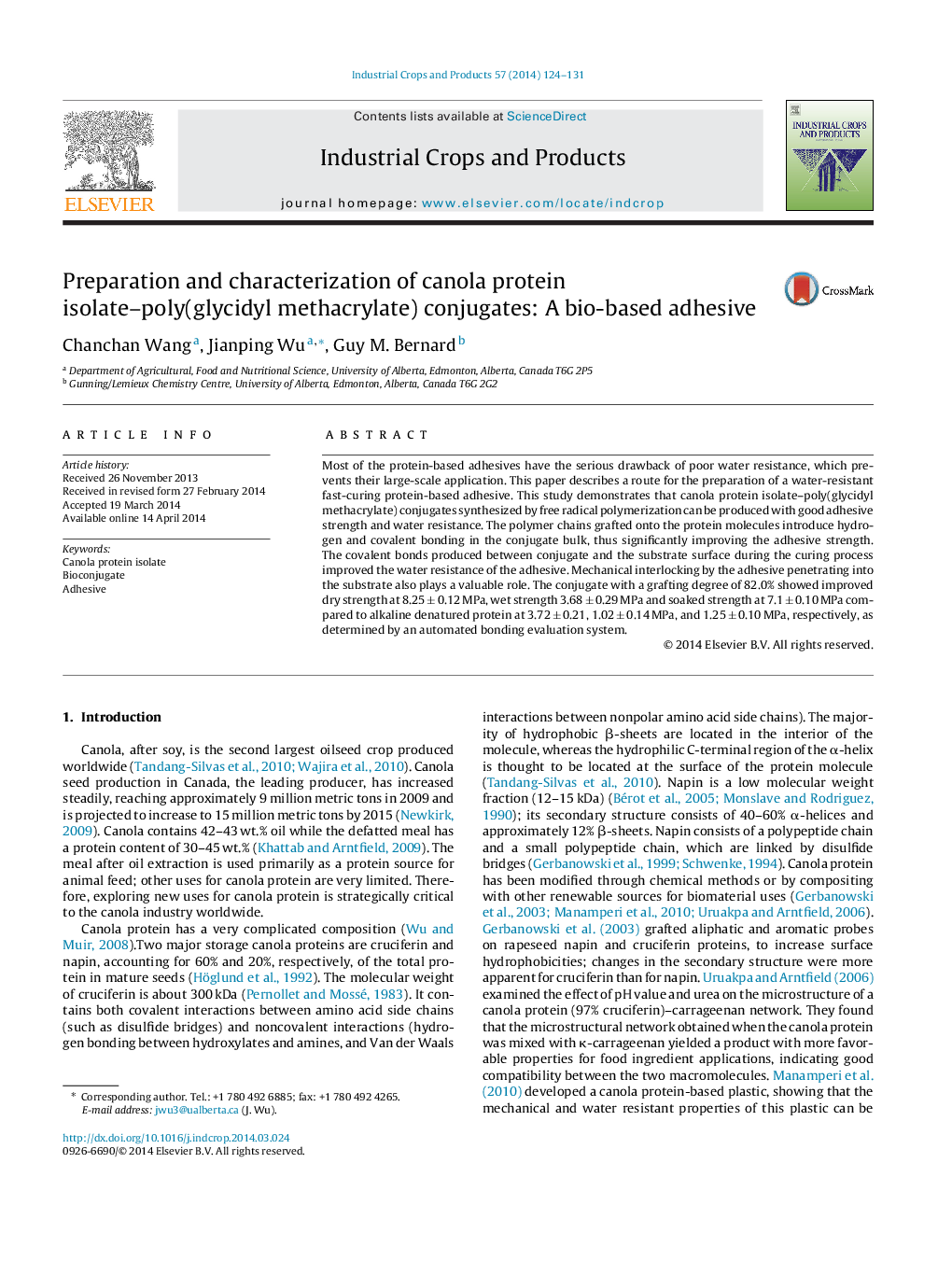| کد مقاله | کد نشریه | سال انتشار | مقاله انگلیسی | نسخه تمام متن |
|---|---|---|---|---|
| 4513334 | 1624852 | 2014 | 8 صفحه PDF | دانلود رایگان |

• A simple method to synthesize cruciferin–poly(glycidyl methacrylate) conjugate by free radical polymerization was developed.
• The adhesive performance of the conjugate was analyzed.
• The adhesive showed competitive adhesive strength and improved water resistance compared with denatured canola protein based adhesive.
• There are covalent bonding among protein molecules, the grafted polymer chains and wood surface.
• The polymer chains contribute to the improvement of the adhesive strength.
Most of the protein-based adhesives have the serious drawback of poor water resistance, which prevents their large-scale application. This paper describes a route for the preparation of a water-resistant fast-curing protein-based adhesive. This study demonstrates that canola protein isolate–poly(glycidyl methacrylate) conjugates synthesized by free radical polymerization can be produced with good adhesive strength and water resistance. The polymer chains grafted onto the protein molecules introduce hydrogen and covalent bonding in the conjugate bulk, thus significantly improving the adhesive strength. The covalent bonds produced between conjugate and the substrate surface during the curing process improved the water resistance of the adhesive. Mechanical interlocking by the adhesive penetrating into the substrate also plays a valuable role. The conjugate with a grafting degree of 82.0% showed improved dry strength at 8.25 ± 0.12 MPa, wet strength 3.68 ± 0.29 MPa and soaked strength at 7.1 ± 0.10 MPa compared to alkaline denatured protein at 3.72 ± 0.21, 1.02 ± 0.14 MPa, and 1.25 ± 0.10 MPa, respectively, as determined by an automated bonding evaluation system.
Figure optionsDownload as PowerPoint slide
Journal: Industrial Crops and Products - Volume 57, June 2014, Pages 124–131